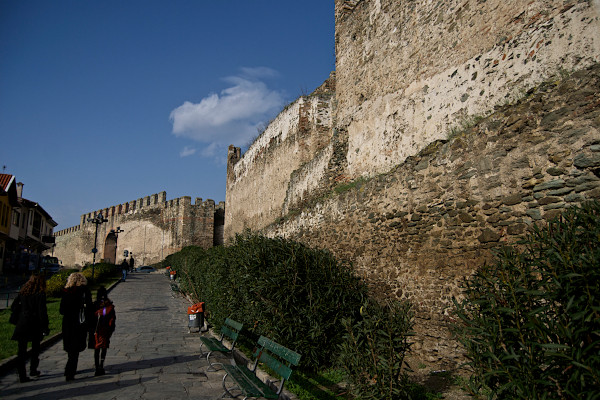Eptapyrgio is located at the northeastern corner of Thessaloniki's fortification. The walls of the fortification date from 279-395 BC when the Roman emperor Theodosius fortified the city. Those were already existing some years before the official foundation of Thessaloniki in 315 BC by Cassander.
What does Eptapyrgio mean?
The monument is also known by its Turkish name "Yedi Kule" since it also served as an Ottoman fortress for some centuries. The Greek name Eptapyrgio and the Turkish Yedi Kule have exactly the same meaning since they literally mean "seven towers". The fortification gained its name probably from the Yedikule fortress in Constantinople (today's Istanbul).
It was for centuries the major bastion of the defense of the city and during the Ottoman era, while it served as the headquarters of the commander of the guard.
During the 1890's Eptapyrgio was converted to a prison. This use remained until 1989 when an extended restoration project under the Ministry of Culture started. There are actually many references about the infamous prison of Yedi Kule that finally closed and moved to the Diavata area.
What is Eptapyrgio today?
Today, the complex of Eptapyrgio consists of two major parts. The ten towers of the Byzantine fortification and the buildings of the prison that was added at the outside part of the fortification. One of those buildings works as an exhibition that welcomes numerous guests and presents the uses of Eptapyrgio during the centuries.
